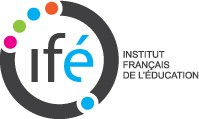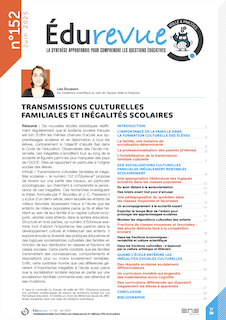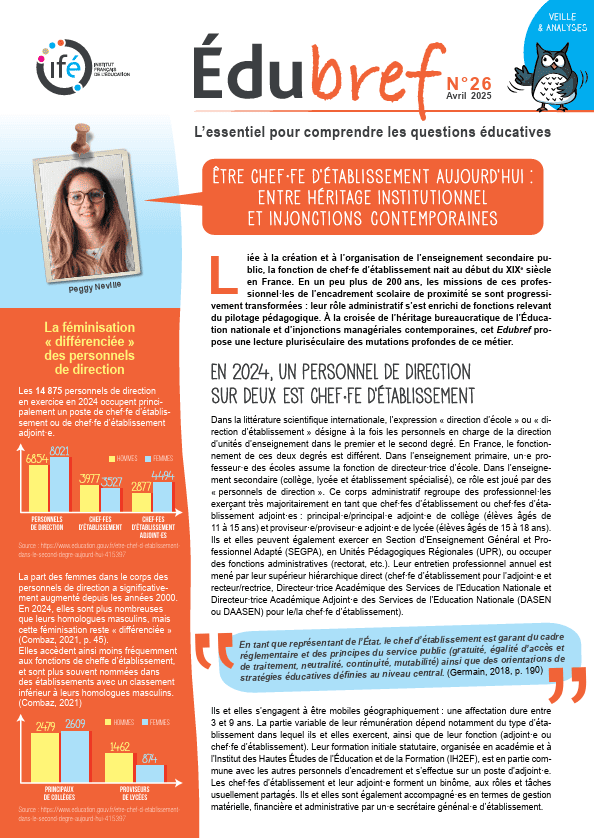Education at a Glance 2021: OECD Indicators
Editeur(s) : Organisation de Coopération et de Développement Économiques - OCDE (OCDE)
Date : 09/2021
Education at a Glance is the authoritative source for information on the state of education around the world. It provides data on the structure, finances and performance of education systems across OECD countries and a number of partner economies. More than 100 charts and tables in this publication – as well as links to much more available on the educational database – provide key information on the output of educational institutions; the impact of learning across countries; access, participation and progression in education; the financial resources invested in education; and teachers, the learning environment and the organisation of schools.
The 2021 edition includes a focus on equity, investigating how progress through education and the associated learning and labour market outcomes are impacted by dimensions such as gender, socio-economic status, country of birth and regional location. A specific chapter is dedicated to Target 4.5 of the Sustainable Development Goal 4 on equity in education, providing an assessment of where OECD and partner countries stand in providing equal access to quality education at all levels. Two new indicators on the mechanisms and formulas used to allocate public funding to schools and on teacher attrition rate complement this year's edition.
- Achieving basic education and equitable education outcomes is still a challenge
An upper secondary degree remains the basic level of education expected of young adults to contribute effectively to society. However, one in five adults across the OECD has not attained upper secondary education and in some countries, a significant share of children leave school early. In 2019, at least 10% of school-aged youth were not in school in about a quarter of OECD countries. Among the factors influencing education performance, socio-economic status has a greater impact on the literacy skills of 15-year-olds than gender or country of origin. Socio-economic status also tends to influence the programme orientation students pursue, as students without a tertiary-educated parent, a proxy for socio-economic status, are more likely to enrol in upper secondary vocational programmes than in general programmes. Those without upper secondary education face disadvantages in the labour market. In 2020, the unemployment rate of young adults that had not completed upper secondary education was almost twice as high as those with higher qualifications. While unemployment increased by 1-2 percentage points between 2019 and 2020 due to the COVID-19 crisis, there is no clear pattern across adults with different educational attainment levels. Lifelong learning has emerged more than ever as critical for adults to upskill and reskill in a changing world. Yet, more than half of adults did not participate in adult learning in 2016, and the pandemic further reduced opportunities to do so.
- Immigrant background tends to influence learning trajectories while employment prospects of foreign-born adults vary greatly across countries
On average across the OECD, foreign-born adults account for 22% of all adults with below upper secondary attainment, 14% of those with upper secondary or post-secondary non-tertiary education, and 18% of tertiary-educated adults. Being a first- or second-generation immigrant affects students’ likelihood of completing upper secondary education: in almost all countries with available data, the upper secondary completion rate of first- or second generation immigrants was lower than that for students without an immigrant background. In most OECD countries, employment rates are lower among tertiary-educated foreign-born adults than among their native-born peers, but the opposite is often observed among those with lower educational attainment. In about half of OECD countries with data, foreign-born adults with below upper secondary education earn more relative to their native-born peers than those with tertiary education, while the opposite is true in the other countries. These opposing trends reflect the dynamics of supply and demand for different skills, the difficulties tertiary-educated foreign-born adults face in gaining recognition for their education and experience earned abroad, and lower wage expectations of foreign workers in some countries.
- Financial support can facilitate access to non-compulsory levels of education
On average across countries, expenditure on educational institutions amounted to approximately USD 9 300 per student at pre-primary level; USD 10 500 at primary, secondary and post-secondary non tertiary level; and USD 17 100 at tertiary level. The public sector funds 90% of total expenditure on primary and secondary institutions on average, often compulsory in most OECD countries. Funding formulas, which use equity criteria such as socio-economic characteristics of students or students with disabilities, to allocate funds to schools are the most commonly used at these levels. Private provision of education is more common at pre-primary and tertiary education, serving about a third of children or students enrolled at the level. However, the share of private funding from households and other private entities is generally lower at pre-primary level (17%) than at tertiary level (30%) on average. Financial support can facilitate access for disadvantaged families, although public-to-private transfers are less common at pre-primary than at tertiary level. In some countries where tuition for a bachelor progamme is higher than USD 4 000, at least 60% of students benefited from a public grant, scholarship or government-guaranteed private loan. Public funding on primary to tertiary education has, however, been rising. It increased by 10% between 2012 and 2018, although at a slower rate than total government expenditure (12%) over this period.
- The rise in education of recent decades has not benefited men as much as women
Young men are more likely than young women to lack an upper secondary qualification on average across OECD countries. Boys make up about 60% of upper secondary-school repeaters on average and are more likely to pursue vocational education than general education. In 2019, men represented 55% of upper secondary graduates from vocational programmes, compared to 45% in general ones. Men are also less likely to enter and graduate from tertiary education. In 2019, women made up 55% of new entrants to tertiary education on average. If current patterns continue, it is expected that 46% of young women will graduate with a tertiary degree for the first time before they turn 30, 15 percentage points more than men. Despite their strong participation in higher education, the share of women decreases with higher tertiary level: In 2020, women made up only 45% of adults with a doctoral degree on average across OECD countries. Women are also less likely than men to enter a STEM field of study, although this share has increased in slightly more than half of OECD countries with data between 2013 and 2019. Despite higher attainment, the employment rate for women is lower than that of men, with a particularly large gap at lower levels of educational attainment. Women also earn on average about 76-78% of men’s salaries regardless of educational attainment, although the gender gap narrowed by 2 percentage points on average between 2013 and 2019.
- Men are less likely to enter and remain in the teaching profession
Between 2005 and 2019, the gender gap among teachers widened at the primary and secondary levels, and narrowed at the tertiary level. In 2019, less than 5% of pre-primary teachers were men, compared to 18% at primary level, 40% at upper secondary level and more than 50% at tertiary level on average. Attracting male teachers to the profession is particularly difficult: while the average actual salary of female teachers is equal to or higher than the average earnings of full-time, tertiary-educated female workers, primary and secondary male teachers only earn 76 85% the average earnings of full time, tertiary-educated male workers. It is also difficult to retain men in the teaching profession. In 2016, attrition rates in primary to secondary public institutions varied from 3.3% to 11.7% across OECD countries; however, male teachers had higher attrition rates than their female colleagues on average across countries with available data. While statutory salaries have remained generally stable in the last decade, actual salaries have been on the rise, increasing by 11% at pre-primary level, 9% at primary, 11% at lower secondary and 10% at upper secondary between 2010 and 2019 on average across countries and economies with data. Tasks and responsibilities also contribute to the attractiveness of the profession. Teaching makes up an important part of teachers’ responsibilities, representing 51% of their working time on average at primary level and 44% at lower secondary level.
- Other findings
In more than half of the countries with available data, the enrolment rate of 15 19 year olds varies more within countries than across them.
On average across OECD countries, average class size does not differ between public and private institutions by more than two students per class in primary and secondary education.
Tertiary students from lower or lower middle-income countries are less likely to travel abroad to study; they make up less than a third of the international student pool.
The association between education and life expectancy at age 30 is greater for men than for women: men with tertiary attainment can expect to live around six years longer than those with below upper secondary attainment compared to three years more for women.
Télécharger le document : https://www.oecd-ilibrary.org/.../education-at-a-glance-2021_b35a14e5-en
mot(s) clé(s) : comparaison internationale, données statistiques, politiques éducatives













